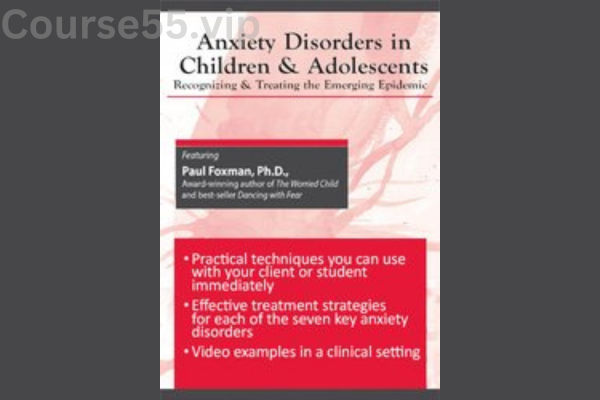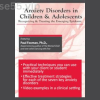-
×
 Utah Legal and Ethical Issues for Mental Health Clinicians By Susan Lewis - PESI
1 × $23.10
Utah Legal and Ethical Issues for Mental Health Clinicians By Susan Lewis - PESI
1 × $23.10 -
×
 What to Do in the First 90 Days of Your New Job
1 × $23.10
What to Do in the First 90 Days of Your New Job
1 × $23.10 -
×
 Outbursts, Oppositional Defiance and Frustration in the Classroom: Self-Regulation Techniques to Reduce the Frequency, Severity and Duration of Problematic Behavior By Laura Ehlert - PESI
1 × $23.10
Outbursts, Oppositional Defiance and Frustration in the Classroom: Self-Regulation Techniques to Reduce the Frequency, Severity and Duration of Problematic Behavior By Laura Ehlert - PESI
1 × $23.10 -
×
 Acceptance and Commitment Therapy (ACT) Made Easy: Innovative Techniques for Depression, Anxiety, Trauma & Personality Disorders By Douglas Fogel - PESI
1 × $23.10
Acceptance and Commitment Therapy (ACT) Made Easy: Innovative Techniques for Depression, Anxiety, Trauma & Personality Disorders By Douglas Fogel - PESI
1 × $23.10 -
×
 New Rules for Treating Trauma: Integrating Neuroscience for Resilience, Connection and Post-Traumatic Growth By Courtney Armstrong - PESI
1 × $23.10
New Rules for Treating Trauma: Integrating Neuroscience for Resilience, Connection and Post-Traumatic Growth By Courtney Armstrong - PESI
1 × $23.10 -
×
 Advances in Motor Control and Learning for Neurological Rehab By Ben Sidaway - PESI
1 × $23.10
Advances in Motor Control and Learning for Neurological Rehab By Ben Sidaway - PESI
1 × $23.10 -
×
 Legal and Ethical Issues in Behavioral Health in South Carolina By Lois Fenner - PESI
1 × $23.10
Legal and Ethical Issues in Behavioral Health in South Carolina By Lois Fenner - PESI
1 × $23.10 -
×
 Using EMDR Across the Lifespan By Robert Tinker - PESI
1 × $23.10
Using EMDR Across the Lifespan By Robert Tinker - PESI
1 × $23.10 -
×
 Barb Stepp’s NLP Master Practitioner By Barbara Stepp
1 × $23.10
Barb Stepp’s NLP Master Practitioner By Barbara Stepp
1 × $23.10 -
×
 Maine Legal and Ethical Issues for Mental Health Clinicians By Susan Lewis - PESI
1 × $23.10
Maine Legal and Ethical Issues for Mental Health Clinicians By Susan Lewis - PESI
1 × $23.10 -
×
 PTSD in Veterans: Impact of PTSD on Military Personnel and War Veterans and Their Families By Michael Gatson - PESI
1 × $23.10
PTSD in Veterans: Impact of PTSD on Military Personnel and War Veterans and Their Families By Michael Gatson - PESI
1 × $23.10
Anxiety Disorders in Children and Adolescents: Recognizing & Treating the Emerging Epidemic By Paul Foxman – PESI
$124.00 Original price was: $124.00.$23.10Current price is: $23.10.
SKU: C55vip.1097562G3tOFg
Category: Download
Tags: Anxiety Disorders in Children and Adolescents, Paul Foxman - PESI, Recognizing & Treating the Emerging Epidemic
Review of Anxiety Disorders in Children and Adolescents: Recognizing & Treating the Emerging Epidemic by Paul Foxman – Digital Download!

Anxiety Disorders in Children and Adolescents: Recognizing & Treating the Emerging Epidemic By Paul Foxman – PESI
Overview

Review of Anxiety Disorders in Children and Adolescents: Recognizing & Treating the Emerging Epidemic by Paul Foxman
As concerns about mental health among youth rise, Anxiety Disorders in Children & Adolescents: Recognizing & Treating the Emerging Epidemic by Paul Foxman emerges as an invaluable resource. Drawing from over four decades of clinical expertise, Dr. Foxman sheds light on the growing issue of anxiety disorders in children and adolescents today. This comprehensive guide explains various anxiety disorders, identifies early symptoms, and presents effective treatment strategies designed to help young people navigate these challenges. In an era of increasing mental health awareness, Dr. Foxman’s work serves as both a manual for professionals and a practical resource for parents and educators, providing essential tools to support youth facing anxiety.
Understanding the Types of Anxiety Disorders
Anxiety disorders consist of various distinct yet interconnected conditions that affect children and adolescents. Symptoms range from excessive worry and fear to physical manifestations such as rapid heartbeat or sweating. The following anxiety disorders are commonly seen in youth:
- Separation Anxiety Disorder: Characterized by extreme fear when separated from caregivers.
- Panic Disorder: Involves recurring panic attacks that can be overwhelming and disabling.
- Obsessive-Compulsive Disorder (OCD): Features intrusive thoughts (obsessions) paired with repetitive behaviors (compulsions).
- Social Anxiety Disorder: A significant fear of social situations, often leading to avoidance of interactions where judgment is perceived.
- Phobias: Intense, irrational fears of specific objects or circumstances.
- Post-Traumatic Stress Disorder (PTSD): Caused by experiencing or witnessing a traumatic event.
Dr. Foxman stresses the importance of early detection of these symptoms. Timely recognition improves the chances of successful intervention, leading to better outcomes. Given that research shows one in eight children are affected by anxiety disorders, this alarming statistic underscores the need for heightened awareness and efficient treatment methods.
The Impact of Co-Occurring Conditions
The presence of co-occurring conditions adds complexity to the treatment of anxiety disorders. Many children with anxiety disorders also struggle with ADHD and learning disabilities, which can worsen anxiety symptoms and complicate coping strategies. Dr. Foxman’s guide effectively addresses these intersections, helping clinicians understand the multifaceted nature of anxiety in children. By adopting a holistic approach that considers both anxiety and co-occurring conditions, caregivers can promote resilience and improve mental health outcomes for affected children.
The book also includes evidence-based strategies for managing these overlapping issues. For instance, when treating ADHD alongside anxiety, medications and therapies may be adjusted to address both conditions, providing a more tailored and effective treatment plan.
Therapeutic Methods to Address Anxiety in Youth
Dr. Foxman offers various therapeutic methods aimed at alleviating anxiety in children and adolescents. These multifaceted strategies include:
-
Cognitive-Behavioral Therapy (CBT): This evidence-based approach helps children reshape negative thought patterns and behaviors. CBT enables young individuals to confront their fears and reframe their thoughts in a structured, supportive environment.
-
Mindfulness Practices: Techniques such as breathing exercises, yoga, and meditation equip children with tools to manage stress and anxiety. These practices promote calmness and present-focused awareness.
-
Expressive Arts: Creative activities like art, music, and dance provide children with an expressive outlet for their emotions, helping improve communication and self-esteem.
-
Family Systems Approaches: Involving the family in therapy is crucial, as family dynamics often play a role in a child’s anxiety. This approach helps improve communication and creates a supportive atmosphere for the child.
Dr. Foxman’s practical suggestions empower parents, educators, and mental health professionals to implement effective interventions, leading to improved outcomes for children dealing with anxiety.
Identifying Environmental Stressors and Their Role in Anxiety
A significant theme in Anxiety Disorders in Children and Adolescents is identifying and addressing external stressors contributing to anxiety. Dr. Foxman highlights several common stressors, such as:
- Academic Pressure: The competitive nature of academic environments can increase stress and anxiety in children.
- Social Media Influence: The pervasive impact of social media can amplify feelings of inadequacy and fear of judgment among adolescents.
- Family Dynamics: Family stressors, including marital issues or financial problems, may indirectly affect children’s anxiety levels.
Recognizing these external factors allows for interventions aimed at alleviating stress. For example, schools can create programs to reduce academic pressure or encourage healthier social media habits among students. Moreover, fostering environments that promote self-regulation skills helps children develop coping mechanisms, ensuring they are equipped to handle challenges. Implementing such practices can alleviate anxiety symptoms and enhance overall emotional resilience.
Conclusion
In conclusion, Anxiety Disorders in Children and Adolescents: Recognizing & Treating the Emerging Epidemic by Paul Foxman is an essential resource for anyone working with youth affected by anxiety. Dr. Foxman’s comprehensive approach, which includes a deep understanding of anxiety disorders and practical therapeutic strategies, equips readers with the knowledge needed to recognize, understand, and treat these conditions. As mental health awareness continues to grow, parents, educators, and mental health professionals are increasingly called upon to create supportive environments for children and adolescents. Through informed strategies and a compassionate approach, we can combat the growing epidemic of anxiety and help pave the way for healthier futures for young people.
Frequently Asked Questions:
Business Model Innovation: We operate a group buying strategy, allowing participants to share costs and access popular courses at reduced prices. This model benefits individuals with limited financial resources, despite concerns from content creators about distribution methods.
Legal Considerations: The legality of our operations involves complex issues. Although we don’t have explicit permission from course creators to resell their content, there are no specific resale restrictions stated at the time of purchase. This ambiguity creates an opportunity for us to provide affordable educational resources.
Quality Control: We ensure that all course materials purchased are identical to those offered directly by the creators. However, it’s important to understand that we are not official providers. As such, our offerings do not include:
– Live coaching calls or sessions with the course author.
– Access to exclusive author-controlled groups or portals.
– Membership in private forums.
– Direct email support from the author or their team.
We aim to reduce the cost barrier in education by offering these courses independently, without the premium services available through official channels. We appreciate your understanding of our unique approach.
Be the first to review “Anxiety Disorders in Children and Adolescents: Recognizing & Treating the Emerging Epidemic By Paul Foxman – PESI” Cancel reply
You must be logged in to post a review.












Reviews
There are no reviews yet.